This is what an expansion tank is for in a heating system.
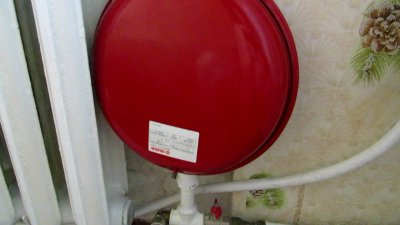
An expansion tank is a mandatory component of an autonomous heating network, ensuring its safe and uninterrupted operation.
Device stabilizes blood pressure in the circuit, accepting excess coolant.
It protects the heating network from breaks and premature wear.
The purpose of the expansion tank in the heating system
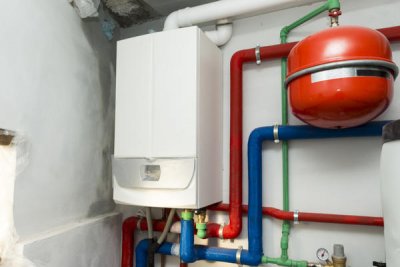
The volume of liquid substances increases when heated. Since water is an incompressible liquid, even slight heating leads to an increase in pressure in a sealed heating system.
To compensate for excess coolant in the heating network, expansion tanks are installed. They perform the following functions:
- removal of excess water when heated;
- return of liquid to the circuit when cooling;
- maintenance stable pressure in the heating network by regulating the volume of the coolant;
- protection of all elements of the heating system from hydraulic shocks;
- accumulation and withdrawal air vapor, which appear when the water coolant is heated.
Reference! Water contains dissolved gases, which, when heated, take the form of bubbles and enter the closed heating circuit, causing the formation of air locks.
What is it for?
Volume kilograms of water at 20°C - 1.002 dm3 (l), when heated up to 90°C it's increasing by 3.4% and reaches 1.036 l.
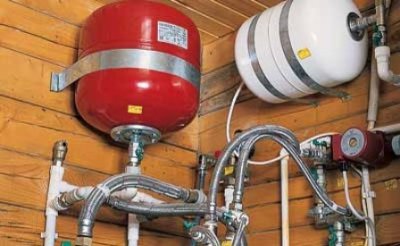
During circulation 200 l the difference in liquids can be 6.8 liters. For a closed heating network, this is a considerable amount and it will not be possible to distribute it through the pipes.
To solve the problem, an expansion tank is installed - a special reservoir connected to the system by one outlet.
During heating, the pressure inside the circuit is compensated tank volume: excess water is directed into it, and when it cools down, it rushes back into the system.
Types of tanks
Expansion tanks for heating networks differ in shape, design, and internal size.
Open type equipment
They are a rectangular or cylindrical container with an open top, where you can always add water if necessary. Most often, such tanks are made of sheet steel and heat-insulate. They are installed at the very top level of heating networks with natural circulation.
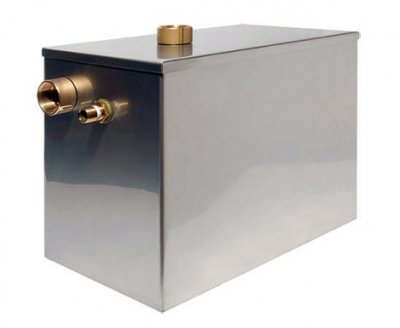
The design includes the following elements:
- capacity various sizes;
- inlet pipe for supplying coolant;
- outlet pipe to return water;
- control pipe, preventing overflow.
The main disadvantages of open expansion tanks are their large size, tendency to corrosion, the need to add water and constant monitoring.
Closed type apparatus and its functions
Suitable for heating networks where the movement of the coolant is provided by pumps. Externally it looks like closed oval or spherical container with a branch pipe for connection to the heating network and a nipple on the reverse side. A membrane is installed inside the tank, separating the cavity into two chambers: one filled with gas (air or nitrogen), the other is intended for liquids.
If there is no heating of the circuit, the tank is empty, when the temperature rises, the excess coolant is directed into the tank, pumping up the pressure in another chamber. When this parameter reaches maximum level, the valve is triggered and excess gas is released. When cooling, the liquid is compressed and pushed back into the circuit. All processes occur automatically.

Photo 1. Closed-type expansion tank, volume 50 l, steel, without replaceable membrane, manufacturer - "Stout".
Closed devices are available in two design versions.
With flanged replaceable diaphragm
The main features of expansion devices of this type:
- Water does not come into contact with the walls of the device, remaining inside the membrane cavity, eliminating the risk of occurrence corrosion and contamination of the coolant.
- Possibility of replacement elastic chamber through flange, fixed with bolts.
- Have high indicators ultimate pressure, than models with a non-replaceable diaphragm.
- Horizontal and vertical execution — convenient to place in boiler rooms of various configurations.
With a fixed membrane
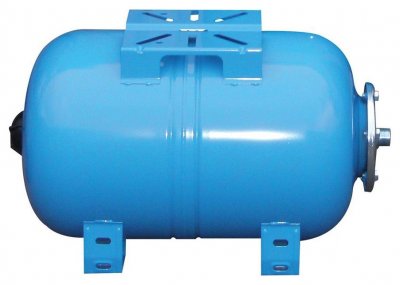
The interior space is divided in two with an elastic butyl diaphragm, which is rigidly attached to the walls of the chamber.
Initially, the entire cavity is occupied by gas, so the membrane is pressed against the walls. During heating, liquid enters the tank, the gas is compressed, and the pressure increases.
Water comes into direct contact with the inner surface, which creates a risk of corrosion. To prevent metal destruction, a coating is applied to the inside of the tank walls. moisture-resistant coating.
The main advantages of devices with a non-replaceable membrane are affordable price and a variety of design options.
Attention! The main disadvantage is when it breaks down diaphragms the tank will have to be replaced with a new one.
Closed expansion equipment is allowed to be installed close to the heating boiler - on the side pump inlet pipe.
How to calculate the volume of the tank
Eat two ways calculation. First — the simplest, gives approximate values. The total volume of the circulating coolant is calculated, then 10% from this number. The resulting figure will correspond to the volume of the expansion tank.
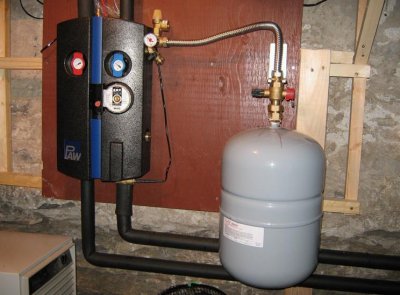
Second The method is accurate, but the following data is required for the calculation:
- Pmax and P0 — the maximum and minimum possible setting pressure in the system required for the operation of the heating network.
- C — volume of coolant (total).
- E — the expansion index of the heat-transfer fluid; for water, it is taken coefficient 0.04, for antifreezes - select according to the table.
The indicators are substituted into the formula:
V= (E×C ×(Pmax+1))/(Pmax+P0)
It is advisable to round the obtained value up, since if there is insufficient volume, the excess will be removed into the sewer through the emergency valve.
Useful video
Watch the video to learn how an expansion tank works and how to choose the right one.
Why are safety valves needed?
With the minimum permissible volume of the expansion tank, the heating pump will turn on more often, the probability of pressure drops in the heating network will increase. Adjustable safety valves will increase the security of the system.
Pay attention to membrane performance: durability and hygiene of the material, resistance to diffusion. And also consider the manufacturer's declared service life and range of operating temperatures.








